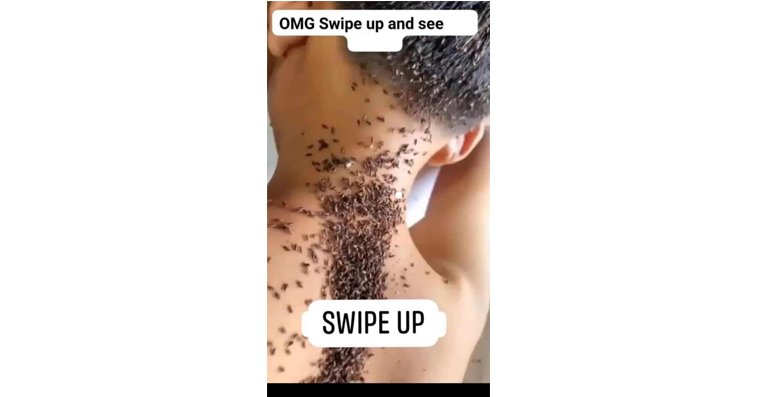Blackheads Extraction Behind Ear

Blackheads, those pesky little skin blemishes, can appear in the most unexpected places, including behind the ear. This often-overlooked area is a hotspot for blackheads due to its unique combination of skin characteristics and relative obscurity in our daily skincare routines.
The skin behind the ear is particularly prone to blackheads because it contains a high density of sebaceous glands. These glands produce sebum, an oily substance that can easily become trapped in pores along with dead skin cells and bacteria, leading to the formation of blackheads.
One of the challenges with blackheads behind the ear is their location. This area is not easily visible during regular skincare routines, so blackheads can go unnoticed and untreated for extended periods.
To extract blackheads behind the ear effectively, it’s crucial to start with clean hands and a clean environment. Using sanitized tools, such as a comedone extractor or blackhead remover, can help minimize the risk of introducing bacteria to the area.
Gently steaming the skin before extraction can also be beneficial. This helps to open up the pores, making it easier to remove the trapped debris. However, caution must be exercised to avoid excessive heat, which can damage the delicate skin behind the ear.
When extracting blackheads, it’s important to apply gentle pressure. Squeezing too hard can cause irritation, redness, or even broken capillaries. A steady, controlled pressure is more effective at removing the blackhead without causing trauma to the skin.
After extraction, it’s essential to clean the area thoroughly to remove any remaining debris or bacteria. Using a gentle cleanser or facial scrub can help ensure the pore is clear and less likely to become clogged again.
Regular exfoliation can also be beneficial in preventing blackheads from forming behind the ear. Exfoliating removes dead skin cells that can mix with sebum and block pores, leading to the formation of blackheads.
For those prone to blackheads behind the ear, incorporating salicylic acid into their skincare routine can be helpful. Salicylic acid is a beta hydroxy acid that exfoliates the skin and helps to dissolve the debris trapped in pores.
It’s important to note that not all blackheads behind the ear should be extracted at home. If a blackhead appears inflamed, painful, or has a red ring around it, it may be best to seek the advice of a dermatologist. They can provide professional extraction and recommend appropriate skincare products.
Ignoring blackheads behind the ear can lead to more significant issues, such as acne or infection. Regularly checking this area during skincare routines can help catch blackheads early and prevent them from worsening.
In some cases, blackheads behind the ear may be a sign of an underlying skin condition, such as acne vulgaris or seborrheic dermatitis. If blackheads persist despite regular care, it’s a good idea to consult with a dermatologist for a proper diagnosis and treatment plan.
Maintaining overall skin health is crucial in preventing blackheads behind the ear. This includes staying hydrated, eating a balanced diet, and avoiding harsh skincare products that can strip the skin of its natural oils.
Some individuals may find that wearing certain types of headgear, such as hats or headphones, can exacerbate blackheads behind the ear. Ensuring these items are clean and not too tight can help reduce friction and irritation on the skin.
For those with sensitive skin, natural remedies like tea tree oil or witch hazel can be effective in treating and preventing blackheads behind the ear. These ingredients have anti-inflammatory and antibacterial properties that can soothe the skin and reduce the risk of infection.
While extracting blackheads can be satisfying, it’s essential to remember not to overdo it. Excessive squeezing or picking can damage the skin and lead to scarring, which can be more difficult to treat than a blackhead.
Incorporating a lightweight, oil-free moisturizer into your skincare routine can help balance the skin’s moisture levels without clogging pores behind the ear. Look for non-comedogenic products that won’t contribute to blackhead formation.
If blackheads behind the ear are a persistent issue, lifestyle factors such as stress or hormonal fluctuations could be contributing. Managing stress through techniques like meditation or exercise and maintaining a healthy hormonal balance can indirectly improve skin health.
Remember, everyone’s skin is different, so what works for one person may not work for another when it comes to treating blackheads behind the ear. It may take some trial and error to find the right combination of products and techniques that work best for your skin type.
In conclusion, blackheads behind the ear are a common skincare concern that can be effectively managed with proper care and attention. By incorporating regular cleansing, gentle extraction techniques, and appropriate skincare products, it’s possible to keep this area clear and healthy. For persistent issues or concerns, consulting with a dermatologist is always a good step towards achieving clear, blackhead-free skin behind the ear.